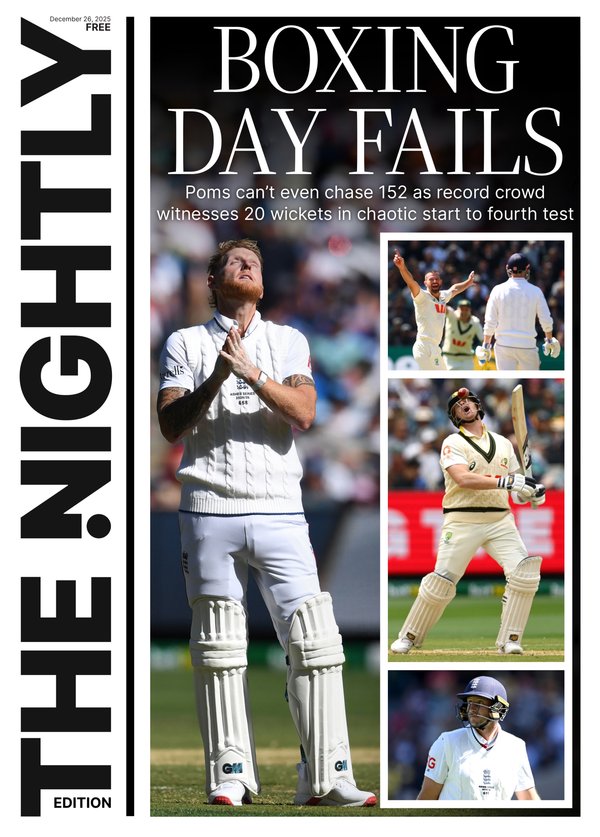New Opposition Leader Sussan Ley: Why history might hold the answer for stricken Liberals

Those who forget history are doomed to repeat it, as the aphorism goes.
For the Liberal Party, the lessons to be learned after a historic election defeat eerily resemble a re-run of a schooling the party received decades earlier.
Women and young people abandoned the conservatives, multicultural communities lost faith and there was a prominent drop in support among metropolitan voters.
Sign up to The Nightly's newsletters.
Get the first look at the digital newspaper, curated daily stories and breaking headlines delivered to your inbox.
By continuing you agree to our Terms and Privacy Policy.Those findings from a 1983 review into the blistering election defeat of then-Liberal prime minister Malcolm Fraser mirror problems raised by party members after the party’s 2025 loss.
Fresh thinking was needed, the talents of women should be better utilised and there had to be better communication with young people, then-Liberal president John Valder found, noting parties that ignored change didn’t survive.
One of those points has been addressed after the most recent electoral defeat with the appointment of Sussan Ley as the first female leader of the federal Liberals.
But she still faces a monumental challenge with a loss of frontbench talent and the need to re-establish what the Liberals stand for with voters, experts and party insiders say.
The wipeout under Peter Dutton on May 3 was proportionally worse than Mr Fraser’s defeat, reducing the Liberals to just 30 per cent of lower house seats - its worst position in the post-war era.
In addition to their greater parliamentary presence, the 1983 Liberals also retained a lot more experience on their front bench, political historian Josh Black said.
There was “an obvious dearth of apparent talent” this time around, meaning the path forward would need to be different, he told AAP.
Outgoing Liberal prime minister Scott Morrison was criticised in the aftermath of his 2022 defeat - at that time the party’s worst in 70 years - for abandoning inner-city seats that were won by teal independents and instead targeting the outer suburbs.
Mr Dutton has been accused of unsuccessfully trying the same playbook that backfired three years earlier.
But the outer suburbs targeted by the coalition were no longer the working-class areas successfully won over by former Liberal prime minister John Howard, pollster Kos Samaras said.
They were now incredibly diverse, often populated by young, immigrant families.
Liberals who thought Howard-era thinking still prevailed were “quite ignorant of the Australia they live in”, Mr Samaras said.
The party needed to become more empathetic and tolerant, including by abandoning its perceived anti-immigration sentiments, he said.
Young, working-class men of Indian heritage in their 20s and 30s, who on the face of it might vote Liberal, did not rally behind the party.
When asked why, they would reply, “Oh, they don’t like us”, Mr Samaras added.
“(The Liberals are) going to have to grab that dog whistle, dig a big hole and bury it and never dig it up again,” he said.
Some among the Liberals question how the party of Robert Menzies, which was formed in conjunction with the Australian Women’s National League, also failed to appeal to the female demographic so badly.
There was no clear start to the Liberals’ women problem but rather decades of incremental decisions, Dr Black said.
Challenges started emerging by the 1970s, when that generation of Liberal politicians were less comfortable sharing power with women compared to those in the Menzies era, he said.
By the 1990s, the Liberals were adamant about not moving to a quota system for pre-selecting women despite the Labor Party making the change.
Senior conservative Liberals also came out in the 2000s against issues like easier access to abortions, he said.
“There are key milestones like this that meant by the 2010s, a real women problem had emerged,” Dr Black added.
Western Sydney MP Melissa McIntosh, one of the few Liberals to hold their outer-suburban seats, said her party had already heeded the message from the election by electing its first female leader.
But it still needed to do a better job communicating what it stood for, she said.
“We have beliefs that women would resonate with talking about equality for all, that’s a core belief of the Liberal Party,” she said.
The Liberals also face a cultural shift, with support for the party plummeting among millennial and Gen Z voters, many of whom have turned to minor parties or independents.
They included people who can’t afford a house and the first generation facing a future in which they would be worse off than their parents, Mr Samaras said.
That cohort of voters did not share the same views as baby boomers had when they were younger, he said, changing the Liberals path back to government compared to the post-Fraser years.
The last time the Liberals were down as low, they were consigned to 13 years in opposition and five consecutive election defeats before Mr Howard’s 1996 victory.
Ms Ley has already made history once by becoming leader and she will need to do it again if she wants to avoid a repeat of the party’s last stint in the wilderness.
